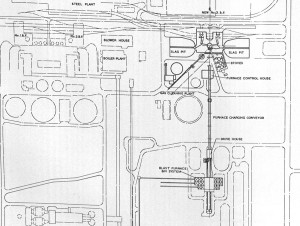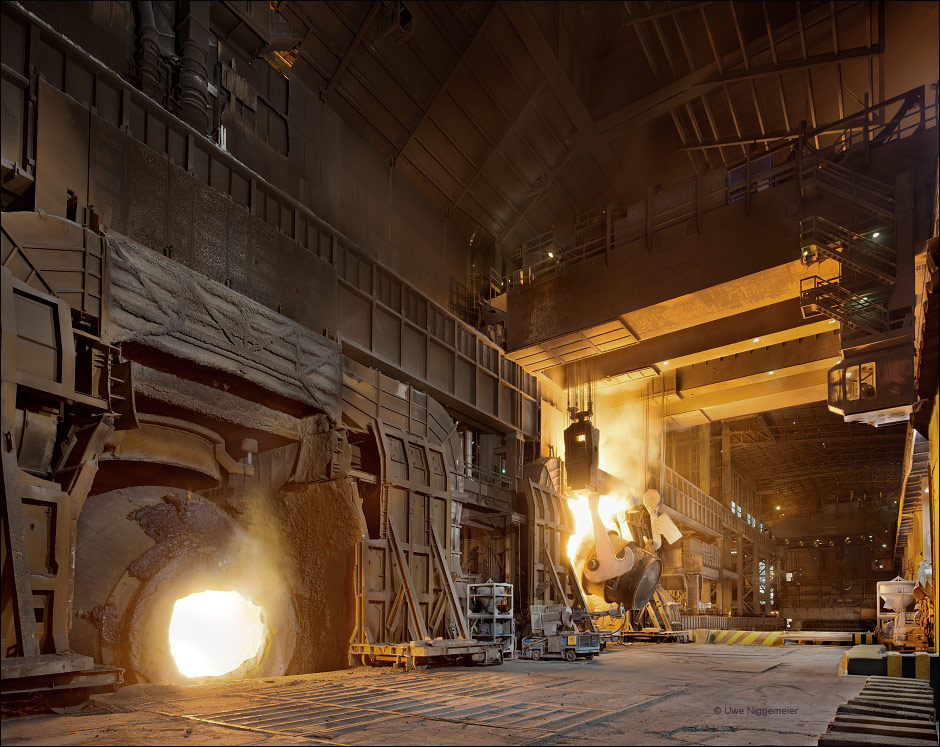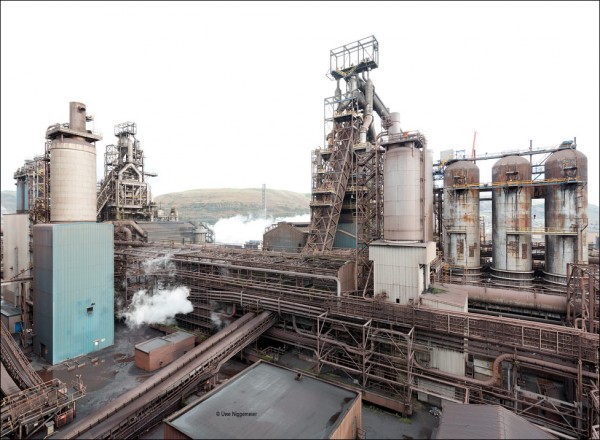
One of the most short-lived fully integrated plants in the history of steel making was torn down 15 years ago.
Built by the Welsh steel maker Richard Thomas and Baldwins Ltd in 1962 the site became part of nationalised British Steel Corporation in 1967 and was called Llanwern works from then on.
In 1974 No. 3 blast furnace was the third to be built on the site and with it’s 11,2 m hearth and two tapping holes it was the first modern large volume furnace in Britain.
Furnaces No. 1 and No. 2 had a hearth diameter of 9,1 m.
Because of the lack of a deep-water iron ore unloading terminal the iron and steel making facilities, including the three 175 t converters of the BOF shop, where closed down in 2001 after producing steel for less than 39 years.

Tag Archives: Wales
The Abbey Works
Though largely downsized the Welsh heavy industry is still worth a visit. The old Abbey works in Port Talbot provide the largest BOF vessels I have seen so far and the longest serving hot strip mill in Europe.
Images now on my website.
Three steel mills were built on the shoreline of Port Talbot south of Swansea, Wales over the last 110 years.
The Port Talbot Works (1902-1961)
The Margam Works (1918-1963)
The Abbey Works (1951-Present)
The Port Talbot works were founded in 1902 by the Gilbertson family. The mill produced iron from imported pig iron in three cupola furnaces and ran an open hearth shop with two furnaces.
The mill was shut down due to technical problems in 1903 and reopened in 1906 by the Port Talbot Steel Company Ltd. .
Two rolling mills and a new open hearth shop were built in between 1908 and 1914.
In 1917 the plant became fully integrated with the construction of the new Margam site half a mile southward. Two blast furnaces , a coking plant and a new open hearth shop were built until 1922. In 1930 the mill became part of the GKB (Guest, Keen, Baldwin) Steel company. Main product were plates and rails.
In 1941 a third blast furnaces became operable at the Margam site.
All three blast furnaces were completly rebuilt after WW II.
In the late 1940ies a plan to build a new huge integrated steel plant south of the Margam works the so called Abbey works was implemented.
Centerpiece of the new site was a wide hot strip mill built by United Engineering of Pittsburgh and partly financed by funds from the Marshall plan.
This rolling mill became operational in 1951. A new open hearth shop containing eight 200 ton furnaces started production in 1952. Two new blast furnaces were built on the site in 1956 and 1959 (No. 4 & No. 5).
The Port Talbot works were closed down and dismantled in 1961 and the old Margam site followed in 1963. Only blast furnace No. 3 survived as a standby furnace and was relighted in 1991 for one year and has been dismantled recently.
In 1967 the Steel Company Of Wales became part of the newly founded British Steel Corporation.
In 1969 a new BOF shop providing two 300 ton vessels was installed replacing the old open hearth furnaces.
The hot strip mill was widely overhauled in the late 1980ies (receiving a new roughing stand).
British Steel merged with Koninklijke Hoogovens from the Netherlands to form Corus in 1999. Eigth years later Corus was taken over by the Tata Steel group from India. Blast furnace No. 4 was completly rebuilt in 2012.
Tata Steel Port Talbot today produces hot and cold rolled flat products and supplies slabs to the hot strip mill in Newport, Wales.


